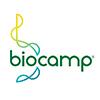How to control secondary colibacillosis after IB, Became more of an issue than the IB
How to control secondary colibacillosis after IB, Became more of an issue than the IB itself. I am Badly Suffering due to secondary infection this 4th broiler flock hit by IB. IB is cure but secondary colibacillosis make my bird crazier Specially Suffering due to e-coli .Fatty LIVER and kidney disorder, bird reduce the feed intake Please advise me how to treat boiler bird Regards Aftab Anwar.







Effective Solutions for Preventing and Treating CRD in Poultry with Natural and Conventional Approaches
IB is not the only primary cause of secondary infection of E.Coli. It is very difficult to confirm the diagnosis of IB, due to many serotypes and expensive serological testing methods.
Other primary causes like Respiratory viruses ( other than IB), Mycoplasmosis, excess CO2 & Ammonia gases should not be neglected to control E.Coli.
Respiratory system is one of the most important system of bird, which is not only supplying O2 to blood via lungs to keep the bird healthy& alive but also helping to remove toxic CO2 gas from birds body.
Normal respiratory rate of resting birds is between 15-25/min, but it can be up to 50/min depending upon the CO2 content of the blood. Excess respiration can damage the respiratory system.
In addition to this, excess Ammonia inside the poultry house i.e. more than 25 ppm is also damaging the tracheal mucosa, due to this the movement of tracheal cilia to expel and stop the pathogen like E.Coli disturbed. In this way, very few numbers of E.Coli etc. can directly reach to lungs and they can multiply very fast in the blood and produce enterotoxin causing clinical infection like CRD.
No doubt vaccination of IB etc., medication and chlorination are important factors to reduce the losses of E.Coli, but the most important factor is to save the tracheal cilia of respiratory system to close the door of entry of E.Coli and other pathogens by providing better quality of air, litter, humidity and ventilation, rather than to waste money on medication and create harmful drug residues for human.
Dr. Mohammad Akram, Consultant Microbiologist, Micro Lab, Karachi.
Diagnosis of IB: this can be done in a field diagnostic laboratory. day pm cases collect kidney samples. make 50 % kidney extract. centrifuge 3000 rpm for 15 minutes. collect 1 cc of kidney extract supernatant. do ha test of kidney extract. segregate kidney samples which are negative for haemo agglutination. to 1 cc of the above extract add bacto trypsin 1 is to 25o 200 micro litter per icc of kidney extract.[ bacto trypsin solution should be 2 % solution in normal saline] after addition of trypsin incubate for 30 minutes in incubater at 37 degrees. do haemoagglutination of trypsin treated kidney extract. if kidney sample is negative for ha prior to trypsin treatment and the same is positive for ha after trypsin treatment means sample is positive for ib[source scientific publication of Pakistan-venugopalan-6-7-18
Without feed sanitation you cannot control e. coli or coliforms in poultry. In certain poultry units or water sanitation plant is provided in shed but water samples from nipples are positive for e. coli or coliforms. Water sample from plant is free of contamination, but nipple samples are positive for e. coli or coliforms. For each shed collect 12 samples (five nipple samples pooled as one) to each sample add 1cc of teepol broth two sets in tubes or vials. One tube incubate at 37 degrees c and another at 44.5 degrees water bath. if water samples at 37 degrees as well as 44.5 degrees are positive means the sample is positive for e. coli. On the contrary, sample is positive only at 37 degrees and negative at 44.5 degrees then sample is positive for coliform
If sample is positive for e. coli or coliforms, do cleaning of waterline and water tank-a.t. venugopalan-6-7-18.
Athangudi Venugopalan, Sir.
Very nice information... I think even probiotic like saccharomyces boulardii also works in control of e. coli. Sir, if you have any article kindly share
Feed decontamination: during mixing of feed infeed mill for every tonne of feed add 2.5 l to 5 l of 50% formalin in the form of fine mist during mixing of feed in feed machine. collect three samples a- morning/b- noon and c evening. each sample one tea spoon in a poly propylene bag add 50 cc of ttc broth to each sample. incubate at room temperature for 24 hours. keep a control without addition of feed.examine at 6 hours interval for colour change that is pink dicolouration. pink colouration within 6 hours microbial load is heavy -4+/ do less than 12 hours load is 3+/positive less than 18 hours load is 2+/positive less than 24 hours load 1+
satisfactory sample is no pink discolouration even after 24 hours- at. venugopalan-6-7-18
By feed decontamination by formalin and water sanitation with chlorine di oxide periodical lab evaluation you can control e. coli or coliforms among poultry. For control of nephron pathogenic ib do field test for ib. If sample is positive for go for ib vaccination with ma5 or ma5 and 4/91. ib vaccine h120 not effective for nephron patho genic ib. before ib vaccination do ib titre of 10 marked birds. 3 weeks after vaccination repeat ib titre examination. If there is reduction titre after vaccination means ib vaccination is satisfactory- venugopalan -6-7-18
Control of E.coli and coliforms among poultry
1- Feed sanitation as per EU regulation using formalin is essential.
2- For water sanitation use only approved food grade chemosterilant chlorine di oxide.
3- Environmental sanitation use only chlorine di oxide.
4- Avoid use of chlorine in sanitation of poultry. chlorine is active at ph 4 to 5.above ph 7 activity of of chlorine is reduced. chlorine in presence of organic matter activity reduced. chlorine in presence of ammonia reacts and form a carcinogen - trihalo methane which is a potent carcinogen. Considering this use of chlorine as a sanitizer was baned inwestern countries more than 25 years back, even in India use of chlorine in Maharastra for public sanitation was baned long back. for sanitation at gate of poultry farms, use only acidified sodium chlorite freshly prepared. As on date most power full germicide evolved by man is chlorine di oxide. There are only six chemo sterilants- ethylene oxide/ chlorine di oxide/hydrogen per oxide/ gluteradehyde/ formadehyde and another one. out of 6 only clo2 and hydrogen per oxide are food grade. use of chlorine di oxide is approved by who/fao/codex/usa/eu/Australia/Canada. chlorine di oxide is cost effective. In USA, for poultry carcass wash after removal of skin is acidified sodium chlorite over 2 decades. venugopalan-6-7-18
Screening test for E.coli / coliforms
1 Prepare broth from day pm cases of poultry. 100 g of chicken meat tips add 200 cc of water. mix it in domestic mixie. Filter through double layer nylon filter. pack in bottle. add lactose 4 g and / bromo cresol purple indicater o.4 ml/ sterilize in pressure cooker for 15 minutes. distribute in 5cc sterile penicillin vials. Now media ready for use. inoculate 5 cc of test material in 2 tubes of media. one incubate at 37 degrees c and another at 45 degrees water bath examine after 24 hours for colour change violet to yellow. Both the tubes are positive means sample is positive for e. coli. on the other hand at 37 degrees positive and negative at 45 degrees means sample is negative for E.coli but positive for coliforms-a. t. venugopalan-6-7-18.
You can prevent or decrease the severity vaccinating baby chicks with Poulvac E.coli, in US some integrators had used when they don’t have a fully protective IB vaccine or combinations vaccine that confers full protection.







.jpg&w=3840&q=75)


















